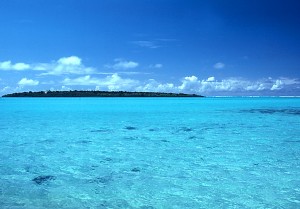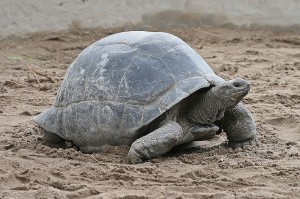Many countries have undergone long, expensive programs to eradicate dangerous foreign species – however, a non-native tortoise is bringing new life to one African island.
The idea of introducing a non-native species into an environment is a controversial one – critics can point to the immense problems caused by European rabbits and toads in Australia, or the devastating impact of invasive alien weeds and shellfish throughout North America. The zebra mussel, native to Russia, famously proliferated in the Great Lakes of Canada and the USA, and causes tens of millions of dollars in damage each year. For Australia, the total yearly economic cost of their rabbit invasion is estimated at $600 million.
There are no eco-systems more fragile and in need of protection than islands – even the Galapagos chain, long considered by scientists to be a virtual garden of Eden for its incredible biodiversity, has been under siege. Spanish settlers imported goats, cats and other mammals in the 19th century, which promptly laid waste to the islands. At one point, more than 100,000 goats roamed the isle of Santiago, just 585 square kilometres in size. They have since been eradicated, at an astronomical cost.
For Ile aux Aigrettes, a very different story will be told – that of a deforested island on the verge of losing its endemic species, saved by the plodding determination of a fleet of giant, 600lb tortoises. Before it was discovered by humans, the island was inhabited by huge lizards, dodo birds, and massive land tortoises of its own – however, these were then hunted to extinction, and exploitation for firewood devastated the island’s native ebony trees. Now maintained as a nature preserve by the Mauritian Wildlife Foundation, there is an uphill climb to conserve what species remain.
There is an elegant balance in nature between plants and wildlife; a dance that, once disrupted, can wreak havoc on an eco-system. In the case of Ile aux Aigrettes, this was between the hardwood forests that dropped their heavy seeds onto the ground below, and the tortoises that ate, and then dispersed, the seeds around the island. With no animals to carry the tree’s seeds to new locations, small saplings would sprout only to wither in the shadow of their parents. Combined with the destruction of the trees by man, the island would lose one of its few remaining indigenous species.
The introduction of the Aldabras, native to the Seychelles, has been an incredible success. According to the National Science Foundation, new saplings have already started to spring up vibrantly in areas trafficked by the tortoises, and no problems have been seen with the adaptation to their new surroundings. As an added bonus, they also feed off non-native plants, reducing their numbers. Nineteen of the creatures now call Ile aux Aigrettes home – none understanding their importance, but all heroes, just the same.




